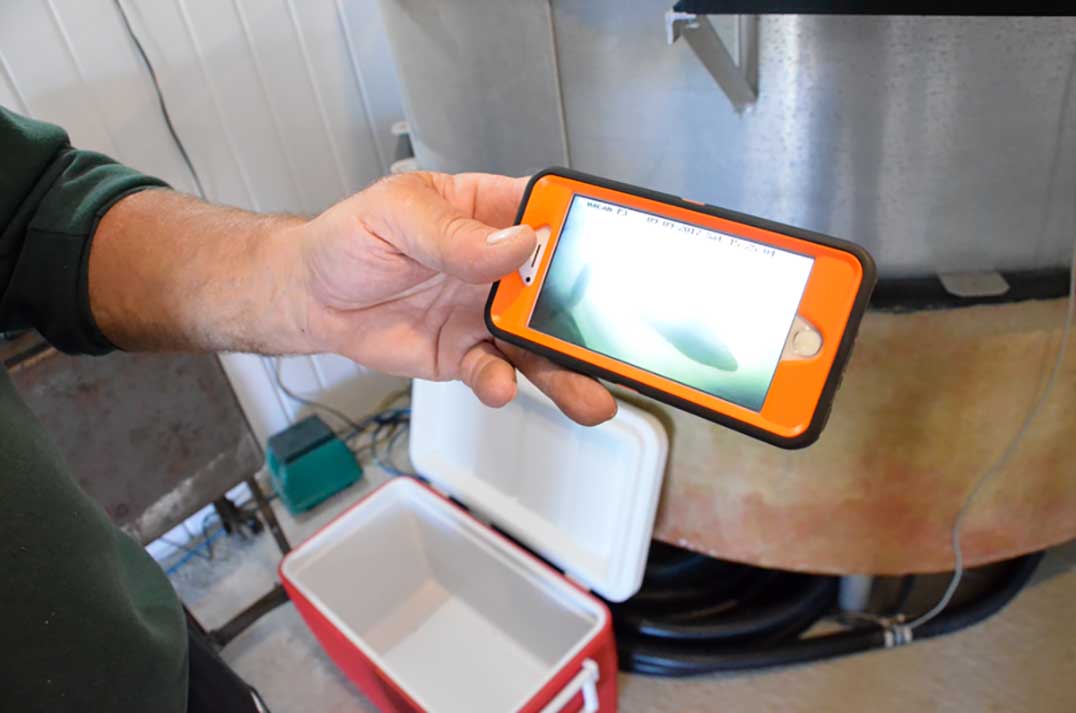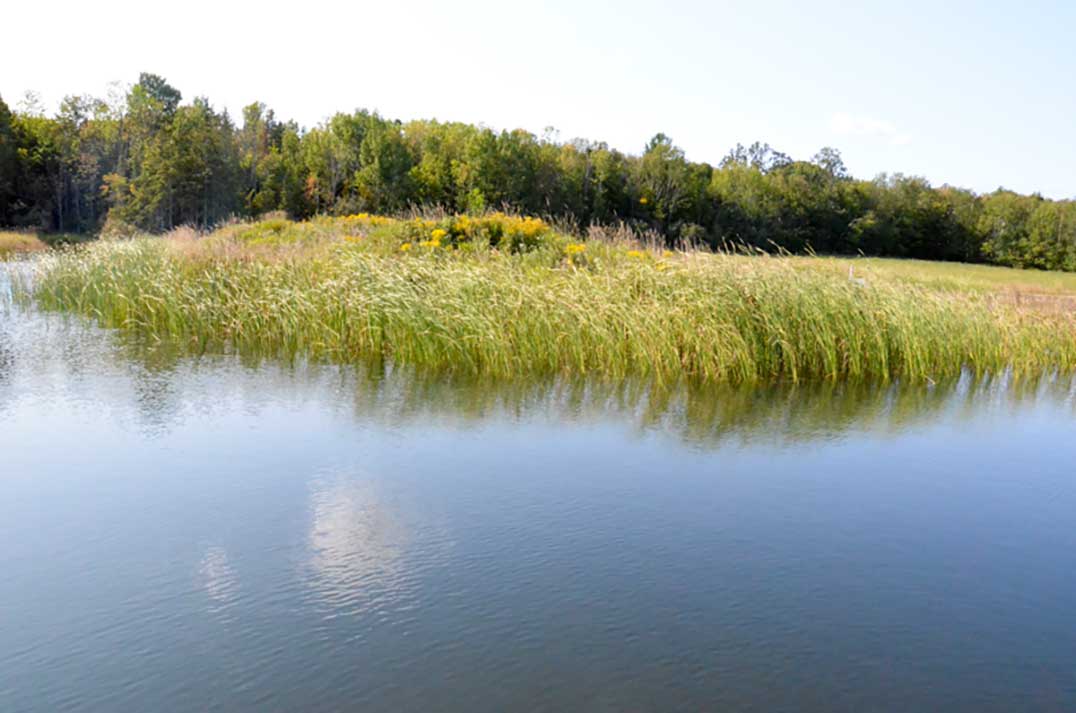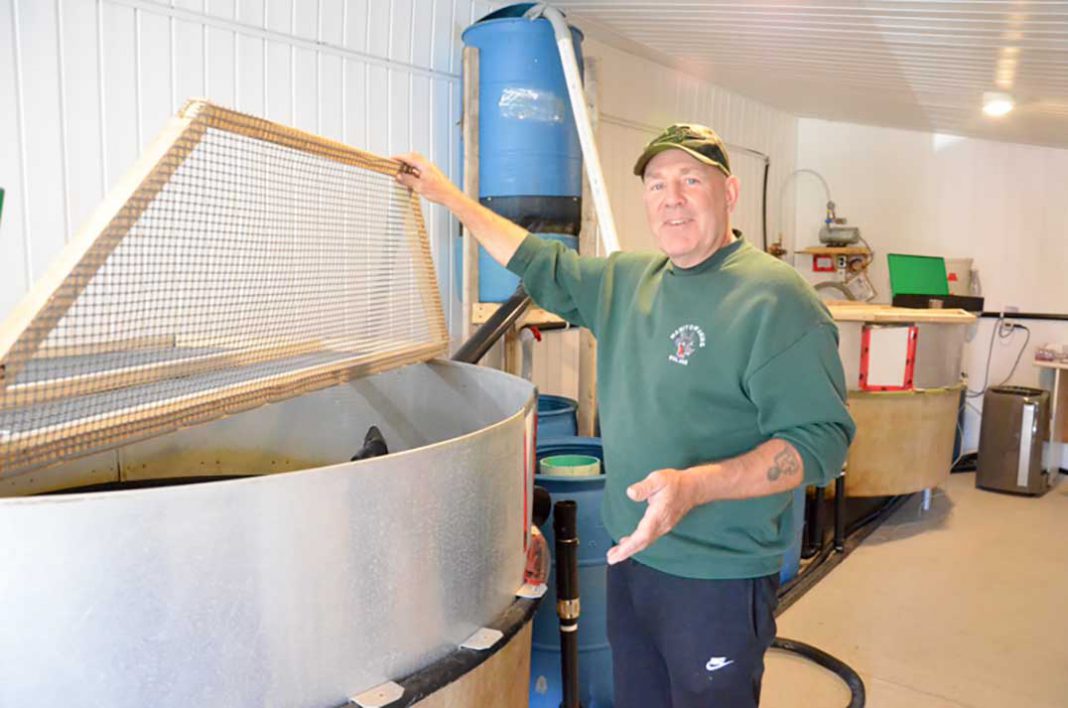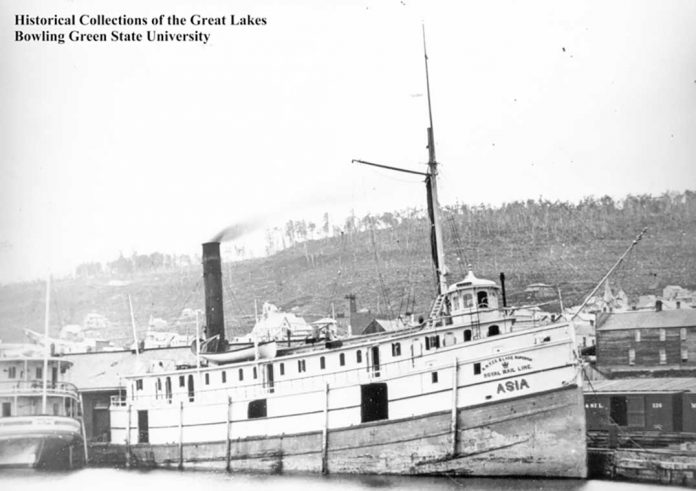ASSIGINACK—If you spend any time at all talking to Manitowaning’s John Caselton you pick up pretty quickly that he is the very definition of a renaissance man—contractor, musician, entrepreneur and meticulous researcher—and when it comes to aquaculture, a man with his eyes set on a very practical (and profitable) endgame.
Mr. Caselton became interested in aquaculture several years ago and he quickly noticed in his research that local cage aquaculture operations seemed to always be looking for quality fingerlings with which to stock their cages.
Setting out to discover everything he could about the industry Mr. Caselton quickly discovered a lot of people in the industry keep their own research close to the chest. “It’s a very competitive industry,” he noted. But he soon also discovered that fish farming is definitely an industry with a bright future.
“We import a huge amount of the fish we eat,” he noted, which might come as quite a surprise when one considers the significant part of the Canadian economy that fishing and aquaculture plays. In 2015, the aquaculture industry generated over $1 billion in GDP, generating close to $3 billion in total economic activity and approximately 72,000 Canadians make their living directly from fishing and fishing-related activities.

photos by Michael Erskine
Ergonomically fish makes huge sense as the feed conversion rates are exceedingly positive. Fish tend to have a feed conversion rate (FCR) ranging from almost one-to-one to one-and-a-half-to-one. Chicken is at least 1.8 to one while pigs are 2.63 to one and lamb is a whopping 6.30 to one and cattle just slightly less at 6 to one. That means that for every six pounds of food consumed by a cattle beast it gains one pound. One to one is pretty attractive on a relative scale.
Mr. Caselton took The Expositor on a tour of his operation recently. He noted that contamination is one of the most dangerous issues faced by aquaculture operations. One of the first things that strikes an observer upon entering the Caselton Aquaculture tankhouse is that it is spotlessly clean. “Biohazards are something you are always on the alert for,” he said.
The other major concern for aquaculture operations is escapees. Being located in a closed system on land rather than an open-water cage culture that issue is clearly not an issue—fish don’t tend to walk away.
There are two large stainless steel tanks in the tankhouse. Mr. Caselton lifts the lid on the first to reveal a swirling school of fish. “These are wild trout,” he explains. “That is why they are different sizes.” Unlike the fish that are generally used in rainbow trout or other aquaculture operations, wild trout don’t tend to grow at a uniform rate. But these trout serve another, might one even suggest sinister, purpose—they serve as the canaries in the fish pond.
“These are Ganaraska rainbow, they are very, very sensitive and tremendously difficult to raise,” said Mr. Caselton, who purchased the stock from the Ministry of Natural Resources and Forestry (MNRF). The Ganaraska River is near Port Hope.
The sensitivity of these particular wild trout makes them just about perfect for Mr. Caselton’s testing purposes. In another tank a school of brook trout swim languorously around. He is hoping to utilize these particular fish as breeding stock.
Outside of the tank house, many meters away, are three outdoor ponds with a total of about 10 million gallons of water between them that Mr. Caselton has built under the close eye of the MNRF. The first feeds into his tankhouse, at the voluminous rate of about .5 litres a minute (that’s to feed a 4,000-litre tank system).

fingerling ponds.
The water in each of the tanks swirls at a very carefully set rate. “Too slow and the fish become aggressive, too fast and they become too lean,” he explains. “It’s called the teacup effect.” The effect is produced through the agency of a radial flow system.
Water from the tanks flow gently into a series of tanks designed by Mr. Caselton to hold KL media, a biofilter material that looks much like a wagonwheel pasta, tanks to remove solids from the water (fish poop and leftover feed) and tanks to deoxygenate the water and remove carbon dioxide.
On a nearby table sits a series of chemical bottles, most of which would be familiar to any serious home aquarium enthusiast. Mr. Caselton regularly tests for ammonia, nitrates, nitrites, dissolved oxygen, water temperature and pH.
Travelling out to the back 40, we stop at the two furthest ponds that stretch out to a treeline several hundred metres away.
“When I first moved here to the farm I was warned that you could not drill for water,” he said. “For about a hundred years the family who farmed here had to truck in their water. I didn’t want to do that. Now I draw my drinking water from these ponds, treat it with filters and ultraviolet systems and it is great water.” Mr. Caselton certainly looks healthy enough. “It hasn’t done me any harm,” he laughs.
Mr. Caselton warns that the fish will probably be reluctant to put in an appearance, but in the ponds live literally thousands of smallmouth bass. “When I come out here early in the morning to feed them they are used to me and come pretty quickly,” he said. It is late afternoon. “With the two of us here they may not come. They are very, very cautious.” Probably for good reason, they are among the most popular of eating fish. “They actually have thicker fillets than walleye,” he said.
Casting a small handful of slow sinking feed pellets out in the water, we are soon rewarded with the sight of some respectable-sized bass. “Those are the little ones, they tend to be a little more hungry,” he said. “There are six and seven pounders that come up in the morning. They don’t move very fast.”
Mr. Caselton might be mistaken for a paranoid militiaman, given the number of closed circuit television cameras that festoon his property, including the tanks, bottoms of the fish ponds and trails around the property. “No,” he laughs. “I just like to stay on top of things.” Best not to try and slip in to cast a line or two when you don’t think he is watching. He always is.
The aquaculturist pulls a cell phone from his pocket and taps a few codes in. Soon we are watching the fish in the tankhouse making their rounds of the tank, a tap or two more, and the fish in the ponds fill the screen, another tap, the feeder stations pop into view, again and we witness the sunlight dappling the clearing by Mr. Caselton’s tree stand.
Almost entirely self taught, Mr. Caselton has become one of the most knowledgeable piscine scholars in the North. “It’s a matter of focus,” he explains.
His MNRF licence lists every single fish species that can be raised in Ontario. Mr. Caselton has networked with bass operations in New York that export tens of thousands of bass into the province, but his gaze is fixed much closer to home. “It’s a matter of numbers,” he explained. “Do I want to raise bass and ship them hundreds of kilometers south, or raise rainbow fingerlings that local operators tell me they will take as many as I can produce.”
It’s a balancing act indeed—bass at six dollars a pound on the hoof or fingerlings at a dollar an inch. “I plan to make money at this,” smiles Mr. Caselton. “A lot of money.”
Judging by his intense passion and the seriousness with which he conducts his research it is easy to believe he is right.
A long set of floater tanks lie at the entrance to the parking lot. They are scavenged from a local aquaculture operation, but Mr. Caselton sees energy savings. “Energy and feed are the two expenses,” he notes. The floater tanks will be used to create a spillway that will make working with the fish a lot less energy intensive. As for the tankhouse, “these tanks will all be coming out next year,” he said, now that he has the science for various species worked out its time to ramp up to a more commercially viable operation. “There will be much larger ones going in.”
At the edges of his ponds lie swathes of bulrushes, a natural filtration system, and the ponds’ overflow drifts into a hayfield. It’s an environmentally sound operation, and small wonder, as Mr. Caselton had to have an environmental impact assessment conducted before he could proceed with square one.
As for those bass? “I am thinking I might be going ice fishing for a hundred thousand pounds of bass,” he grins. Now that will be something to see.





